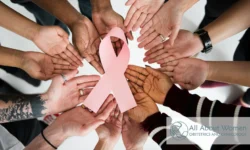MRSA, a type of staph infection, has two classifications: health care-associated MRSA (HA-MRSA) and community-associated MRSA (CA-MRSA).
Most MRSA infections are associated with invasive procedures or devices, such as surgeries, intravenous tubing or artificial joints in people who have been in hospitals, nursing homes and dialysis centers.
Community-associated MRSA occurs among healthy people. It usually starts as a painful skin boil and can ooze pus. This type of MRSA is contagious and can spread by skin-to-skin contact. For example, groups such as high school wrestlers and child care workers are susceptible.
These skin infections commonly occur at sites of visible skin trauma such as cuts and abrasions, and areas of the body covered by hair (e.g., back of neck, groin, buttock, armpit, beard area of men).
While the CDC reports through a 2010 study that HA-MRSA rates have thankfully declined, CA-MRSA cases increased rapidly during the past decade.
Continue reading for more information about community-associated MRSA.
CA-MRSA
Symptoms
This staph skin infection typically starts as a small red bump resembling a pimple or spider bite. It can also appear as a deep boil and drains pus, some which require surgical draining.
The infection can remain confined to the skin, but MRSA infections can also burrow deep into the body, causing serious and even fatal infections in bones, joints, surgical wounds, the bloodstream, heart valves and lungs.
Causes
MRSA bacteria are largely harmless unless they enter the body through a cut or other wound, and even then they usually cause only minor skin problems in healthy people.
You should keep an eye on minor skin problems such as pimples, insect bites, cuts and scrapes, especially in children. Of course, seek medical treatment if wounds become infected. Do not attempt to treat an MRSA infection yourself. You could worsen it or spread it to others.
MRSA is the result of decades of overuse of often unnecessary antibiotics. The more antibiotics you take, the less effective they are.
Preventing CA-MRSA
- Careful and frequent hand-washing remains your best defense against germs. You should scrub briskly for at least 15 seconds, and dry them with a disposable towel. If you can’t wash your hands frequently or you don’t have access to soap and water, carry hand sanitizer containing at least 62 percent alcohol.
- Keep wounds clean and covered with sterile, dry bandages until healed. Keeping wounds covered helps keep the contagious bacteria from the pus from spreading.
- Don’t borrow and don’t share personal items. MRSA spreads on contaminated inanimate objects as well as through direct contact.
- Shower immediately after athletic games or practices always using soap and water. Don’t share towels.
- Keep your linens sanitized. Towels and bed linens need to be machine washed using the hottest water setting (with added bleach, when possible) and dry them immediately. Wash gym and athletic clothes after each and every wearing.
Data show the average age of a person with CA-MRSA is only 23.
Though most MRSA infections aren’t serious, some can be life-threatening. Many public health experts are alarmed by the spread of tough strains of MRSA. Because it’s hard to treat, MRSA is sometimes called a “super bug.”


